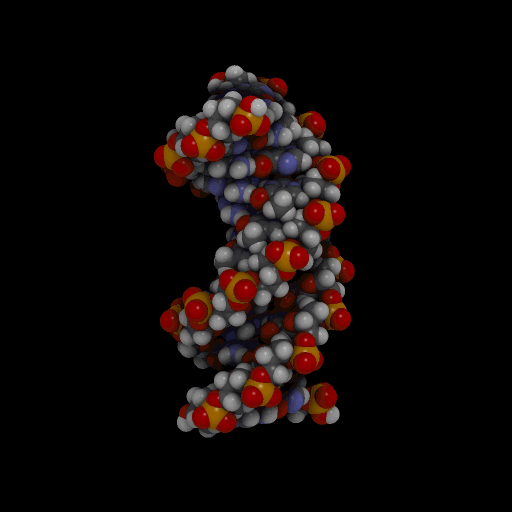A few years ago, Ligers were all the rage. You remember Ligers don't you?
 |
| Here is a Liger looking right at you |
However, hybrids are rare. So why won't I ever see a "Growler Bear" (grizzly bear + polar bear)?
The key resides in the dual-nature of our DNA. Whether you like it or not, every cell in your body has two distinct sources of genetic blueprints: your mitochondria and your nuclei. These two components of your cells serve very different purposes. Your nucleus acts as each cell's command center by ordering the construction of the proteins that maintain your body and dictate its function. Your mitochondria are the power plants of the cell, constantly creating the fuel that keeps the body running. Each of these components has its own genetic blueprints, but in order for cells to work they must both play nice with each other.
It turns out that playing nice with each other is difficult. Because your mitochondrial DNA is always passed down from your mother and your nuclear DNA is always a combination of both parent's nuclear DNA, the two genetic libraries evolve at two different rates. And the more distantly related nuclear and mitochondrial DNA are from each other, the more difficult it becomes to communicate.
This mismatch is not only a giant barrier to hybrids, but also one of the major contributors to how fast organisms age. This idea is called the "pace of life": organisms with high metabolisms often have shorter lives.
Consider a hummingbird flapping its wings hundreds of times a minute. All that energy requires mitochondria to be pushed to their limits, increasing the pressure for perfect communication between nucleus and mitochondria.
This salamander is part of an all-female group in the genus Ambystoma. What makes these salamanders special is their ability to clone themselves while occasionally stealing sperm from other salamanders species. The result are cells with multiple copies of nuclear DNA from up to five other related species (imagine yourself with copies of chimpanzee, gorilla, and orangutan DNA). However, their mitochondrial DNA always remains the same. This mismatch of nuclear and mitochondrial DNA spells a recipe for cellular disaster, but these all-female salamanders are widespread and successful. How do they do it?
The first step in answering this question is to determine if these all-female salamanders do in fact overcome this mismatch. To do this, I am growing tissue from different salamanders and comparing the efficiency of their mitochondria.
The process of evolution has produced many barriers to the creation of hybrids, but one of these barriers could hold the secret to an important question for humans: why do we age?
 |
| DNA: the answers are somewhere in there.You have to look close! |
It turns out that playing nice with each other is difficult. Because your mitochondrial DNA is always passed down from your mother and your nuclear DNA is always a combination of both parent's nuclear DNA, the two genetic libraries evolve at two different rates. And the more distantly related nuclear and mitochondrial DNA are from each other, the more difficult it becomes to communicate.
This mismatch is not only a giant barrier to hybrids, but also one of the major contributors to how fast organisms age. This idea is called the "pace of life": organisms with high metabolisms often have shorter lives.
Consider a hummingbird flapping its wings hundreds of times a minute. All that energy requires mitochondria to be pushed to their limits, increasing the pressure for perfect communication between nucleus and mitochondria.
The bottom line: humans would be very interested in how to maintain a healthy dance between their nuclei and mitochondria. We've recently identified an animal that can somehow maintain this dance against almost impossible odds:
 |
| An all-female Ambystoma salamander: avoiding cellular destruction while looking adorable. |
This salamander is part of an all-female group in the genus Ambystoma. What makes these salamanders special is their ability to clone themselves while occasionally stealing sperm from other salamanders species. The result are cells with multiple copies of nuclear DNA from up to five other related species (imagine yourself with copies of chimpanzee, gorilla, and orangutan DNA). However, their mitochondrial DNA always remains the same. This mismatch of nuclear and mitochondrial DNA spells a recipe for cellular disaster, but these all-female salamanders are widespread and successful. How do they do it?
The first step in answering this question is to determine if these all-female salamanders do in fact overcome this mismatch. To do this, I am growing tissue from different salamanders and comparing the efficiency of their mitochondria.
At least, I hope I am. I've convinced my committee that it is a pretty good idea.
No comments:
Post a Comment